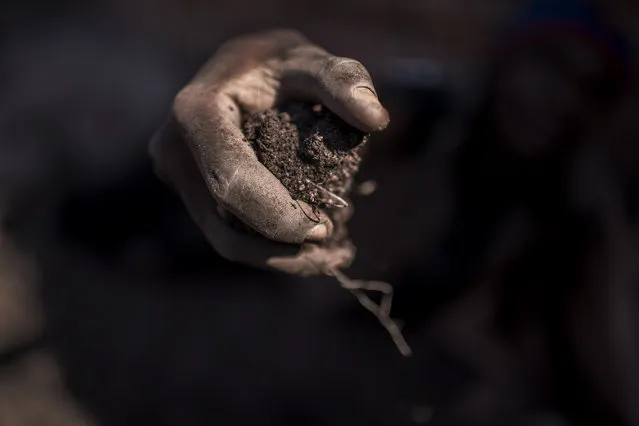
A fistful of cobalt is held up at Musompo, a mineral market outside Kolwezi on June 7, 2016. Cobalt is used in batteries for electronic cars and mobile phones and the DRC has roughly 65 percent of the world's supply. A Post investigation found evidence of child labor and unsafe working conditions in the cobalt mining process. (Photo by Michael Robinson Chavez/The Washington Post)
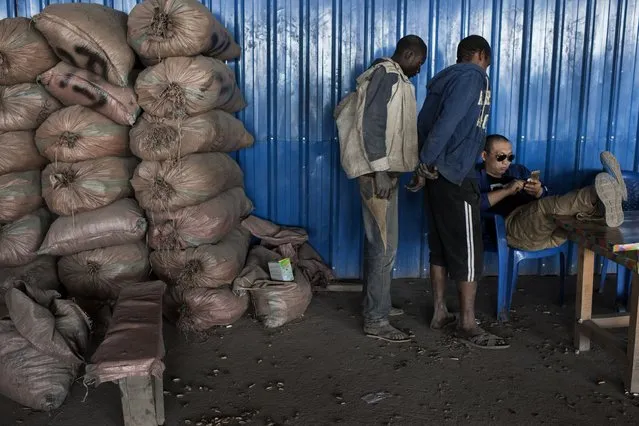
A Chinese “comptoir”, or counter, seated, calculates a payment as “creuseurs”, or diggers eagerly look on at Musompo, a mineral market outside Kolwezi on June 7, 2016. The cobalt dug up by the diggers is sold to Congo Dongfang International Mining(CDM). Cobalt is used in batteries for electronic cars and mobile phones and the DRC has roughly 65 percent of the world's supply. Workers and Congolese government officials claim that scales and metal analyzers are rigged and humidity content exaggerated in an effort to secure lower prices from diggers. Child labor, unsafe working conditions and contamination are all evident in the cobalt mining process. (Photo by Michael Robinson Chavez/The Washington Post)
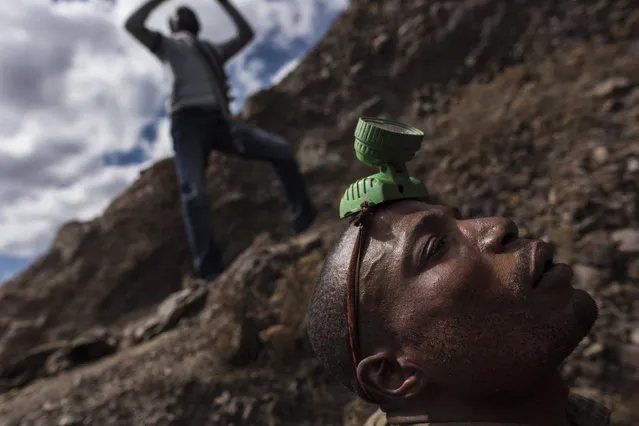
A “creuseur”, or digger, a plastic lantern on his head, readies to enter a copper and cobalt mine in Kawama, Democratic Republic of Congo on June 8, 2016. Cobalt is used in the batteries for electric cars and mobile phones. Working conditions are dangerous, often with no safety equipment or structural support for the tunnels. The diggers say they are paid on average US$2-3/day. (Photo by Michael Robinson Chavez/The Washington Post)
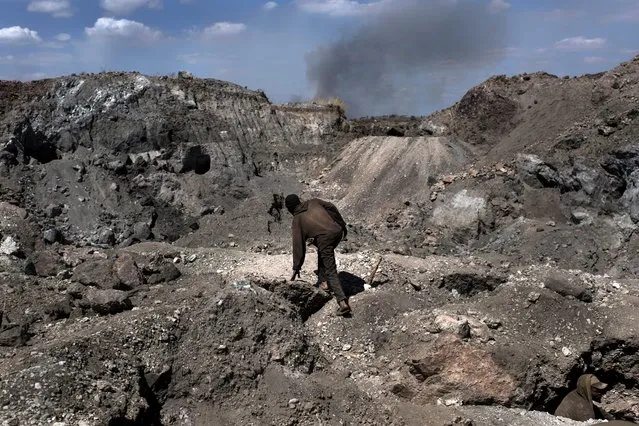
A “creuseur”, or digger, climbs through a copper and cobalt mine in Kawama, Democratic Republic of Congo on June 8, 2016. (Photo by Michael Robinson Chavez/The Washington Post)
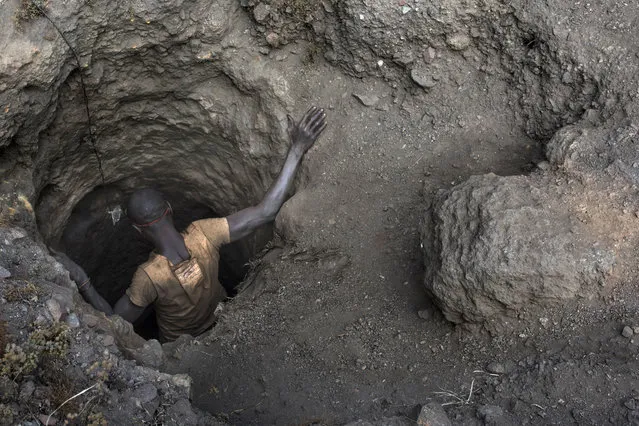
A “creuseur”, or digger, descends into a copper and cobalt mine in Kawama, Democratic Republic of Congo on June 8, 2016. (Photo by Michael Robinson Chavez/The Washington Post)
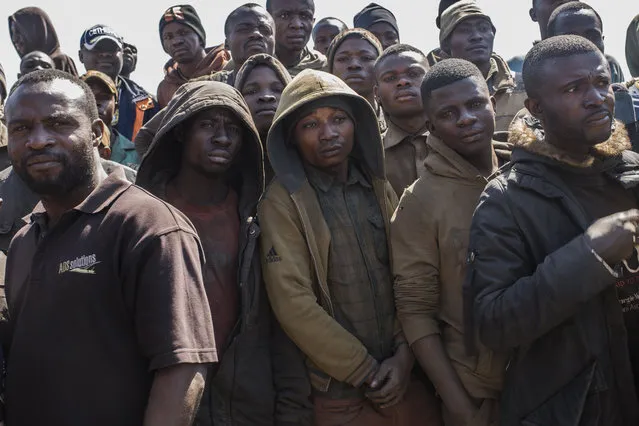
“Creuseurs”, or diggers gather at the Dilwa cobalt mine outside of Kolwezi on June 9, 2016. Miners and workers make on average, US$2-3/day for their labor and work in dangerous conditions with no safety equipment and often, no shoes. The cobalt is separated and then sold to “comptoirs”, or counters at a marketplace and then shipped to local factories of Congo Dongfang International Mining(CDM). Cobalt is used in batteries for electronic cars and mobile phones and the DRC has roughly 65 percent of the world's supply. (Photo by Michael Robinson Chavez/The Washington Post)
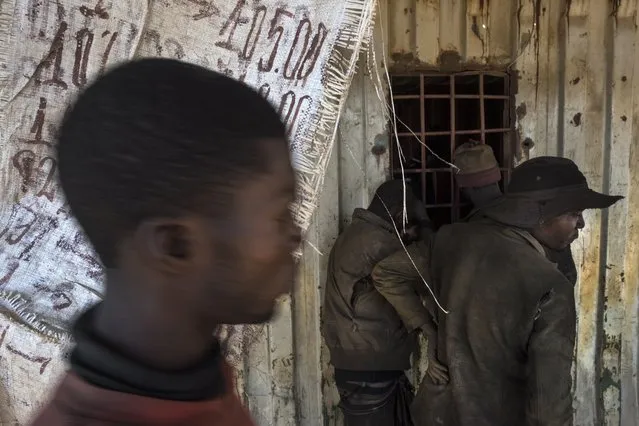
“Creuseurs”, or diggers wait to be paid at the Dilwa cobalt mine outside of Kolwezi on June 9, 2016. (Photo by Michael Robinson Chavez/The Washington Post)
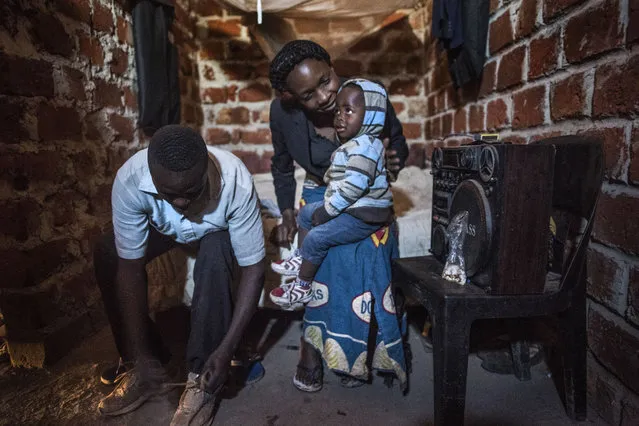
Sidiki Mayamba, left, puts on his shoes in the room he shares with his wife Ivette Mujombo Tshatela and their 2-year-old son Harold Muhiya Mwehu in Kolwezi on June 10, 2016. Mayamba is a “creuseur”, or digger who works in the cobalt and copper mines that surround Kolwezi. He says he works in harsh conditions to bring home $2-3/day. Mayamba and his family rent part of an unfinished home and have no electricity or running water. (Photo by Michael Robinson Chavez/The Washington Post)
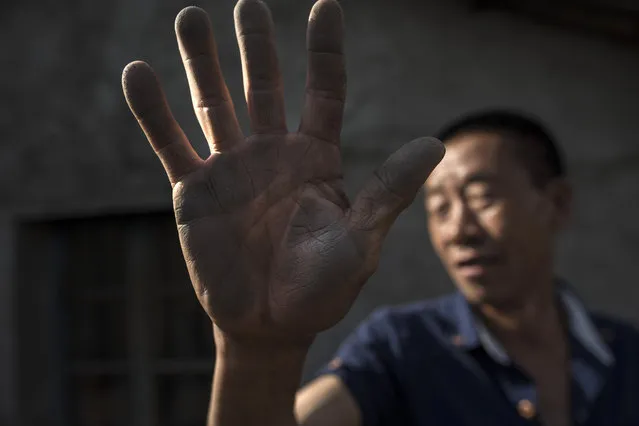
Lyu Shengwen, 55, shows the graphite dust he collected on the side of his house, which he cleaned the day before, in the town of Mashan, China on May 28, 2016. Shengwen lives next door to a graphite factory owned and operated by Aoyu and graphite laden trucks ply the road in front of his home. (Photo by Michael Robinson Chavez/The Washington Post)
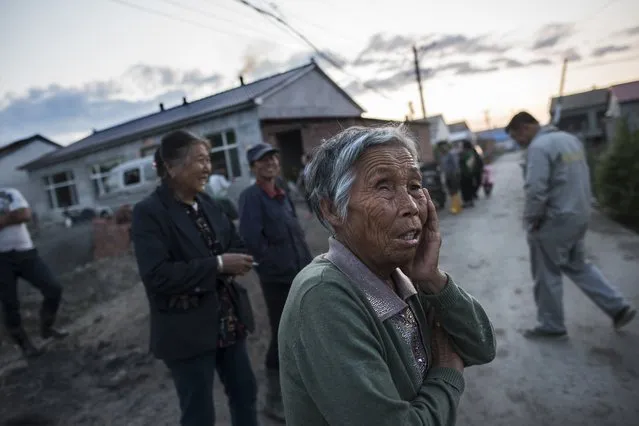
Residents gather and talk in the streets of Liumao, China on May 29, 2016. Liumao sits below BTR, a large graphite mine and factory. Residents of Liumao who live in proximity to the factories complain of contaminated air and water affecting their crops and health. (Photo by Michael Robinson Chavez/The Washington Post)
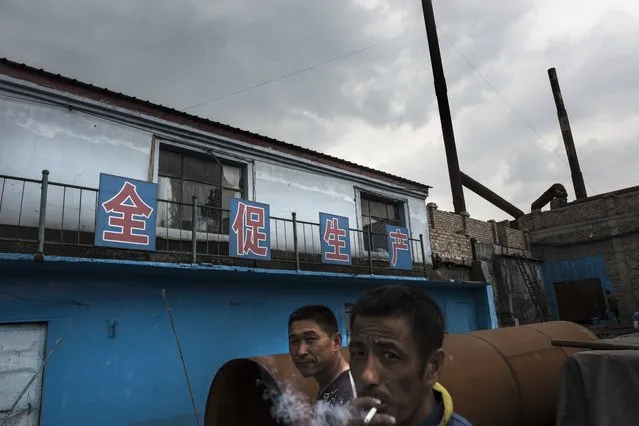
Workers take a break at the Aoyu graphite factory in the town of Mashan, China on May 29, 2016. The northeastern province of Heilongjiang is rich in graphite and there are numerous mines and factories in the region. Locals who live in proximity to the factories complain of contaminated air and water affecting their crops and health. The graphite, which is purchased by Samsung and LG Chem, is a key ingredient in lithium batteries for mobile phones and electric cars. (Photo by Michael Robinson Chavez/The Washington Post)
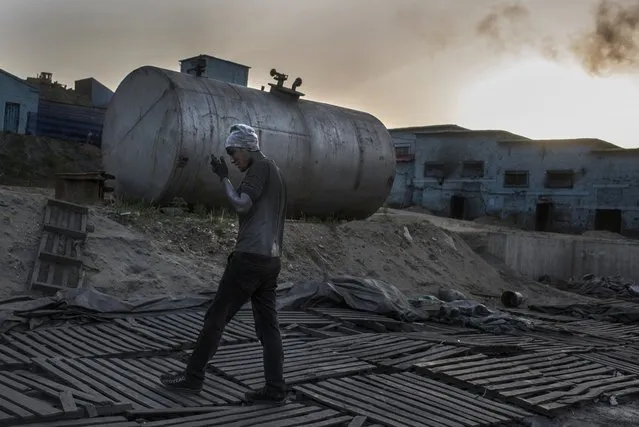
A graphite worker walks across the Jin Yang graphite factory in the town of Mashan, China on May 28, 2016. Workers have very little safety equipment at many of the graphite factories. (Photo by Michael Robinson Chavez/The Washington Post)
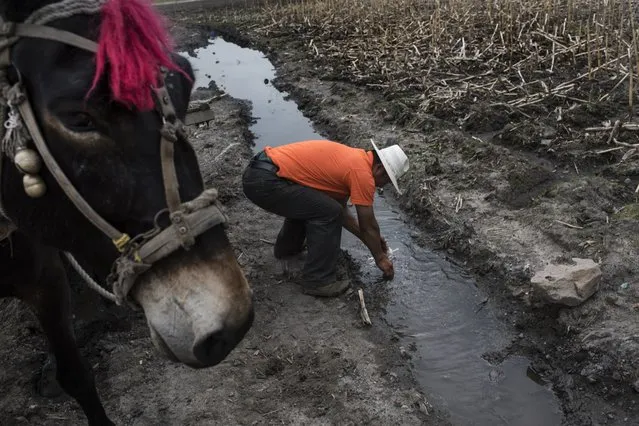
Yu Zhen Jun, a farmer, washes his hands after planting seed in hit corn field outside Liumao, China on May 28, 2016. Jun describes the air and soil as “maitai”, or filthy, a result of the contamination caused by a nearby graphite factory owned by Aoyu. Jun says his crop yield has decreased as a result of the pollution. (Photo by Michael Robinson Chavez/The Washington Post)
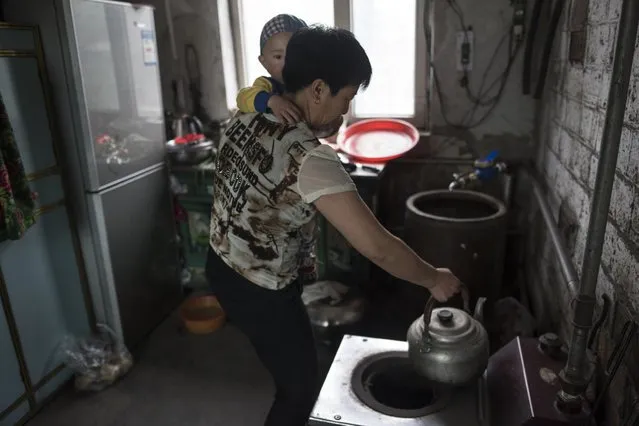
Yanjiao is a satellite city of Beijing that is rapidly consuming all of the villages surrounding it. Beijing's rapid growth is a prime example of China's rapid urbanization. (Photo by Michael Robinson Chavez/The Washington Post)
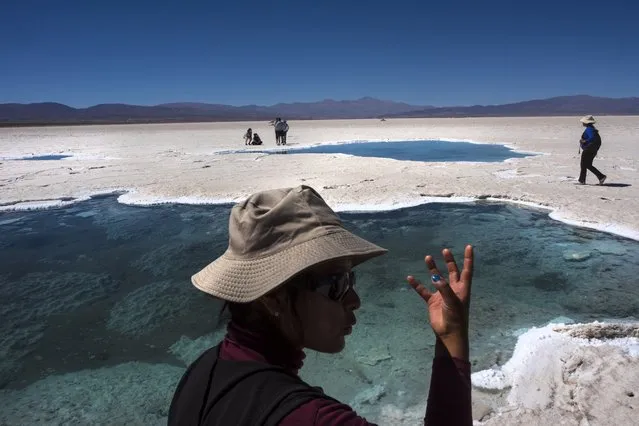
Local indigenous communities have a spiritual connection with the pools, known as “eyes”, in the Salinas Grandes salt flat in Argentina's high Andes. Mining interests are eager to exploit the lithium deposits of this popular tourist area and delicate ecosystem. The promise of “clean” energy replacing our use of fossil fuels must be balanced with knowing the impact that the minerals and metals involved in the process are having on communities and the environment around the world. (Photo by Michael Robinson Chavez/The Washington Post)
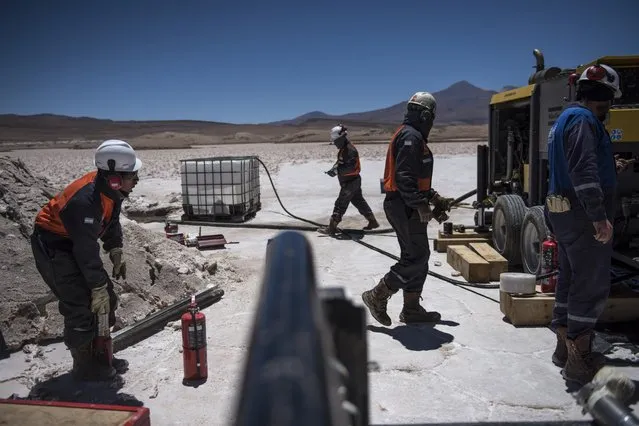
Workers with Millenial Lithium drill into the Pastos Grandes Salar in their search for optimal areas to gather the metal. Battery grade lithium, used for mobile phones and electric vehicles, can command prices as high as US$20,000 a ton. Many critics say environmental costs, mainly the draining of aquifers, some that took over 500,000 years to collect, will decimate the ecosystem. (Photo by Michael Robinson Chavez/The Washington Post)
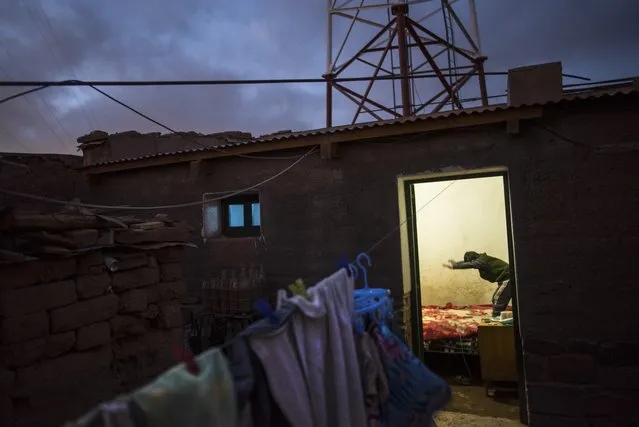
A boy plays in his home in the high Andean town of Susques. As modern life takes hold in the remote Andes, families, who have lived there for generations, adhere to ancient traditions. Most residents live in town during the week and head to their small farm houses, often hours away, on weekends to see family and tend to their livestock. (Photo by Michael Robinson Chavez/The Washington Post)
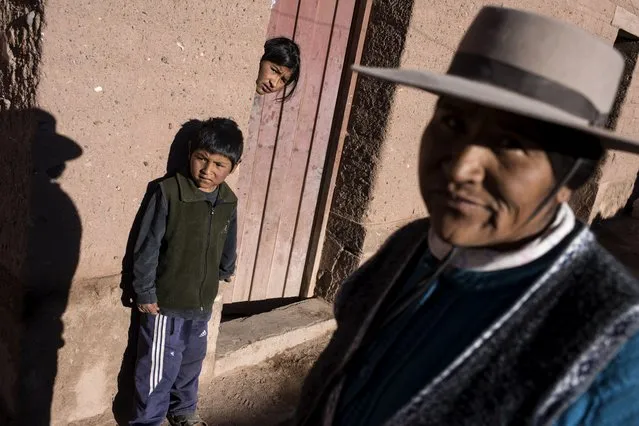
The city of Susques, Argentina has become an epicenter of resistance to the growing number of lithium mines in the region. Local residents are wary of promises from the companies that have not been fulfilled. One mining company said they were going to pay US$50,000 to nearby communities. Three of the towns denied ever receiving or even having heard of the arrangement. (Photo by Michael Robinson Chavez/The Washington Post)
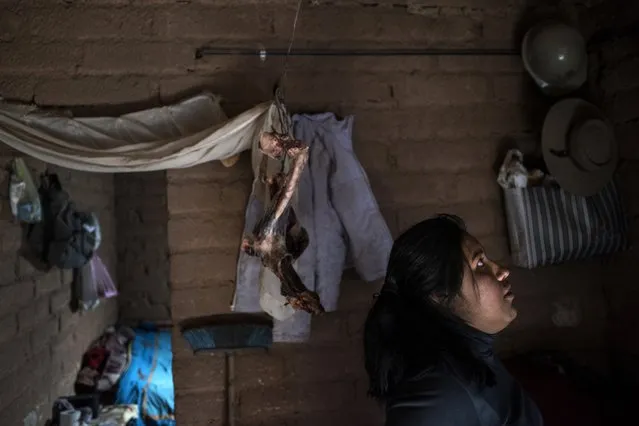
Mining companies have said that they have taken indigenous communities into consideration as they begin exploring the area for lithium. Communities in the area are impoverished and many families have lived in their mountain farms and towns for generations. Remedios Sarapura, 26, stands in her family's tiny adobe home 13,000' up in the Andes, llama bones hanging from the ceiling. The family raises llamas but the herd has dwindled as their pastures have dried up. (Photo by Michael Robinson Chavez/The Washington Post)
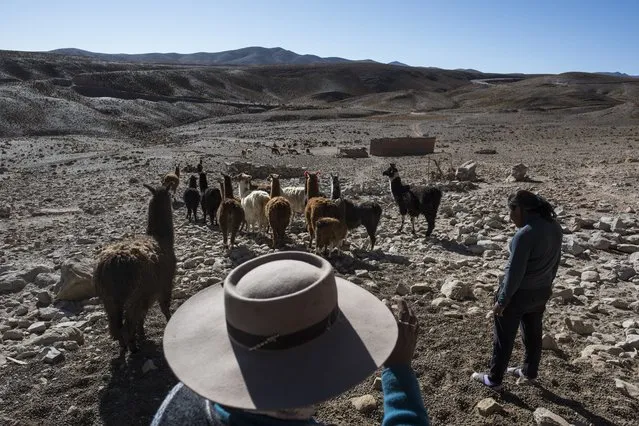
Argentina is experiencing a lithium boom. After years of protectionist economic policy a new business friendly government has taken power. Demand for the metal, which is a key ingredient in lithium batteries that power our smart phones and electric vehicles, has skyrocketed. However, many of the indigenous population fear it has started a land and water grab. Water in Argentina's high Andes is scarce and lithium mining requires large amounts. Llama farmer Navidad Sarapura, 66, in hat, claims that since the mining companies have shown up her grazing land has gone from lush to barren. (Photo by Michael Robinson Chavez/The Washington Post)
30 Dec 2016 10:29:00,
post received
0 comments
